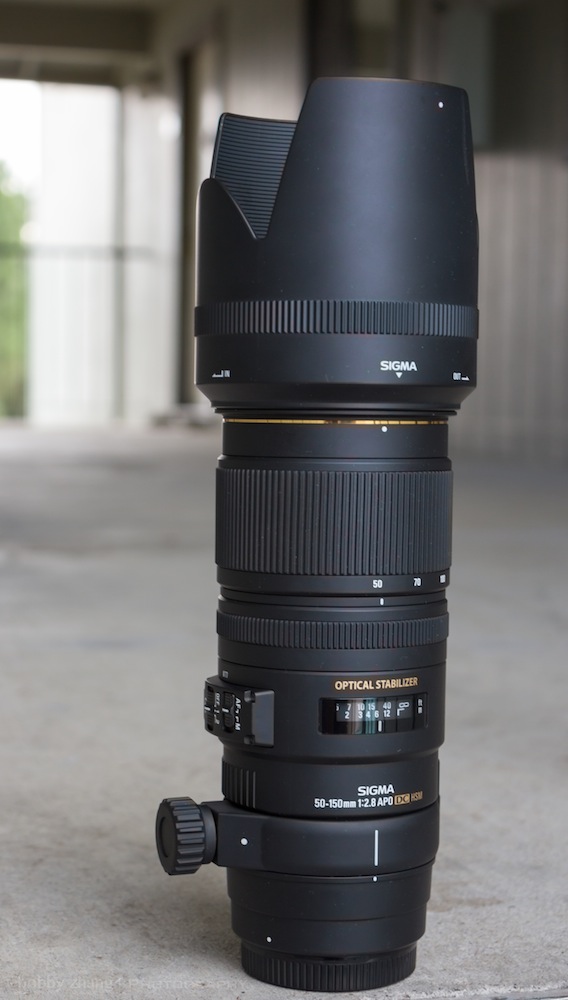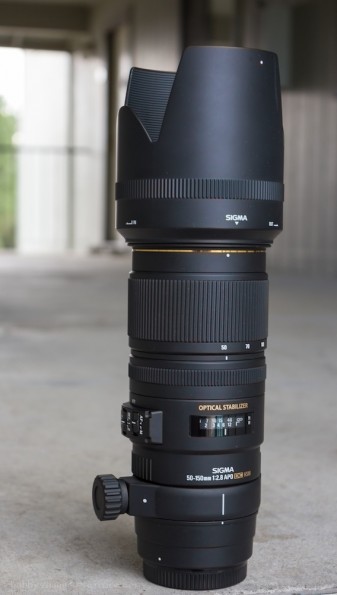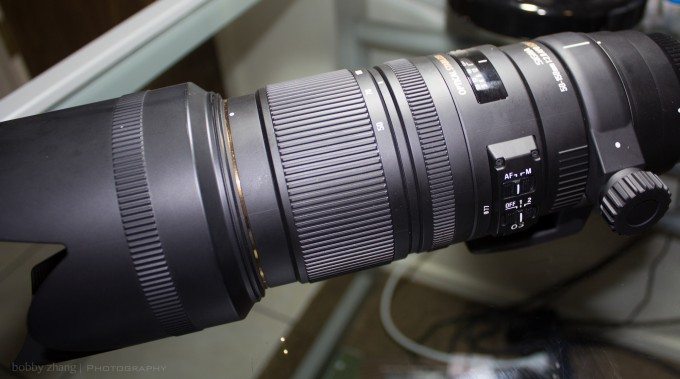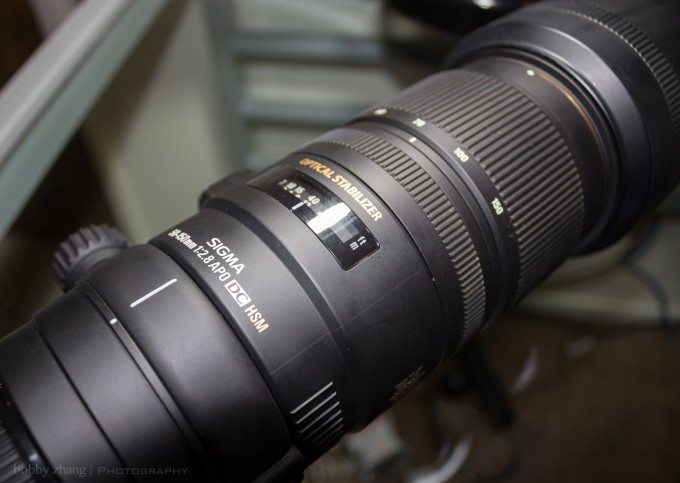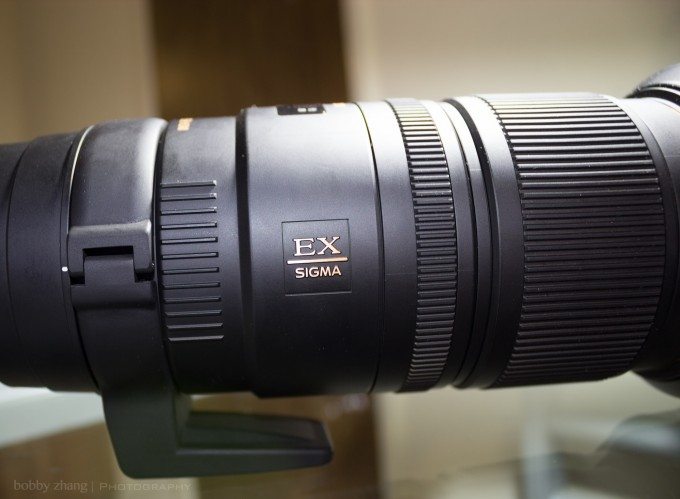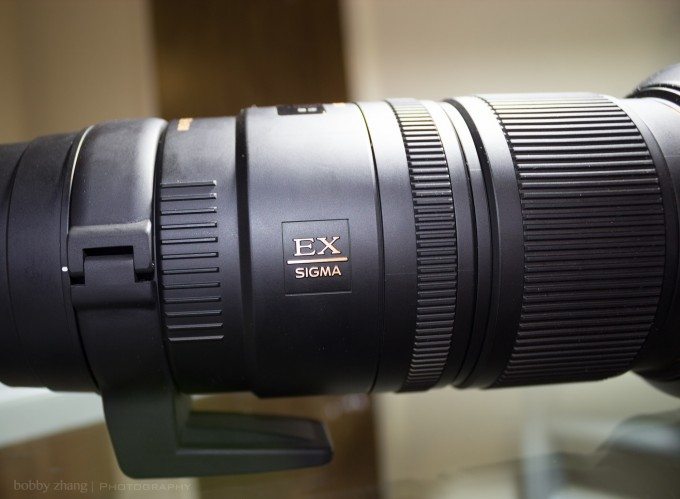Last Updated on 12/17/2012 by Julius Motal
We’re seeing that third-party glass makers are stepping their game up and bringing out lenses that are on par if not even better than the big names: Canon, Nikon, and Sony now. Just ask Chris, who gave it all up for his new Sigma collection. We got Sigma’s 50-150mm f2.8 with Optical Stabilizer (OS) technology in to review and here’s a quick look.
Technical Specifications
From our announcement earlier this year.
- Focal length: 50-150 mm (on APS-C: equivalent to 75-225 mm)
- Max. / min. aperture: f2.8 / f22
- 21 lenses in 15 groups
- Internal zoom and focusing
- Close-focusing limit: 80 cm (2.6 ft)
- Filter thread size: 77 mm
- Size (D x L): 86.4 x 197.6 mm (3.4 x 7.8 in)
- Weight: 1335 g (47.1 oz)
- Available in Canon, Nikon, Pentax, Sigma and Sony mount version
Ergonomics
Straight out of the box, you’ll notice that this lens is heavy. Being use to just the kit lens and my 50mm f/1.8, this was new for me. Being designed for APS-C sensors, my Canon T3i was put to the task as I took it to a college hockey game.
The AF/MF switch is conveniently placed directly on the left side of the lens body with the OS switch immediately under it. I found this to be intuitive and could easily switch them on and off without looking. They are also placed so you don’t have to stretch your hands too far, although I do have larger hands than most people. The DOF and distance indicators are obviously located right on top.
The tripod collar is useful when you aren’t planning to move around a lot for your shoot so you can just place it on your tripod most of the time. However, taking it out to shoot on-the-move, I found that it just got in the way; it was hard to access the zoom and focus rings with the extra piece of metal in the way. Plus, removing the collar sheds a noticeable amount of weight too.
Build Quality
Beginning with the lens mount, it is of the metal variety, which with these heavy telephoto lenses should be a must to avoid any cracks during extended periods of shooting time.
Both the focus and zoom rings are wrapped with grippy rubber and works like a charm. Even with gloves on, I found no problem with quick and accurate adjustments. They are also very smooth without any gritty feel to them.
What was surprising though was when you placed the lens hood on, there was significant movement when it was supposedly locked in place. You can wiggle it and feel it click. However, even after many collisions with the glass at the hockey rink, it stayed on and did its job.
One other oddity that I found during my short time with this lens was the loud click when the OS engages and disengages. As you see the OS try to compensate for your movements in the viewfinder, there’s a click that you both hear and feel. Same for when it disengages. This wasn’t really a bother for me since I wasn’t on a stealth mission anyways.
Autofocus
The AF is spot on most of the time, even during fast action sports, thanks to Sigma’s HSM (Hyper Sonic Motor). There are the occasional hiccups when the background would be in focus instead of the foreground and vice versa, but with the manual override feature, it was quickly fixed.
Ease of Use
There are not necessarily anything outrageously difficult about this Sigma lens. It seems like they made significant improvements from their older version which didn’t have OS. With larger lenses such as the 50-150mm, Sigma includes an Off/1/2 option on their OS switch. If you’re unfamiliar, with OS 1, your lens will compensate for all shakes while OS 2 will only adjust for vertical shakes. This comes in handy during panning when you want to track the moving subject without the OS getting in the way.
With the OS switched on, I found myself shooting useable but not great handheld images at shutter speeds at around 1/60 sec. As this is a heavy and long lens, I would not recommend shooting much slower if you want crisp images.
As I was using it during the hockey game, I was able to quickly zoom in and out to adjust for the hockey player’s movements. I was also grateful that the distance required to move from 50mm to 150mm was a very short distance. It’s approximately 45 degrees to get around the entire focal range.
The focusing mechanism has manual override built in to allow for any small adjustments during when your AF isn’t cooperating with you.
One issue I had was sometimes when I had to quickly readjust the zoom, my fingers would move the focus ring as well as I didn’t extend my hand far enough to only cover the zoom ring as the focus ring is set almost immediately behind the zoom ring.
Image Quality
I haven’t had the chance to use the lens enough to give you folks an accurate or precise review on the image quality as during the hockey game, I was forced to stick with ISO 1600+ with f/2.8 since the lighting was terrible. However, I’ll still include a few photos for what it’s worth.
First Impressions
It’s a heavy piece of glass. After almost three hours of constant shooting and adjusting the zoom and focus, my arms were pretty tired. However, the OS and HSM work wonders to get the quick shots that I haven’t had the chance to get with my other lenses. Despite the few quirks with the lens hood and clicking OS, this is a great lens to get you close to the action, especially with the APS-C sensor that gives the 50-150mm a boost to 75-225mm for Nikon bodies and 80-240mm for Canon bodies.
Please Support The Phoblographer
We love to bring you guys the latest and greatest news and gear related stuff. However, we can’t keep doing that unless we have your continued support. If you would like to purchase any of the items mentioned, please do so by clicking our links first and then purchasing the items as we then get a small portion of the sale to help run the website.


